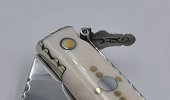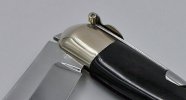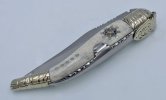Fodderwing
Gold Member
- Joined
- Jan 31, 2017
- Messages
- 9,182
Senor Herreros, your historical account is fascinating and very much appreciated. What greater purpose can these forums serve than the sharing of this type of knowledge by the few who possess it?
Perhaps I missed it but I will ask. How long a period of time did the apprentice serve before he left the master and began the work on his own?
Thank you and I wish you all the best.
Perhaps I missed it but I will ask. How long a period of time did the apprentice serve before he left the master and began the work on his own?
Thank you and I wish you all the best.




